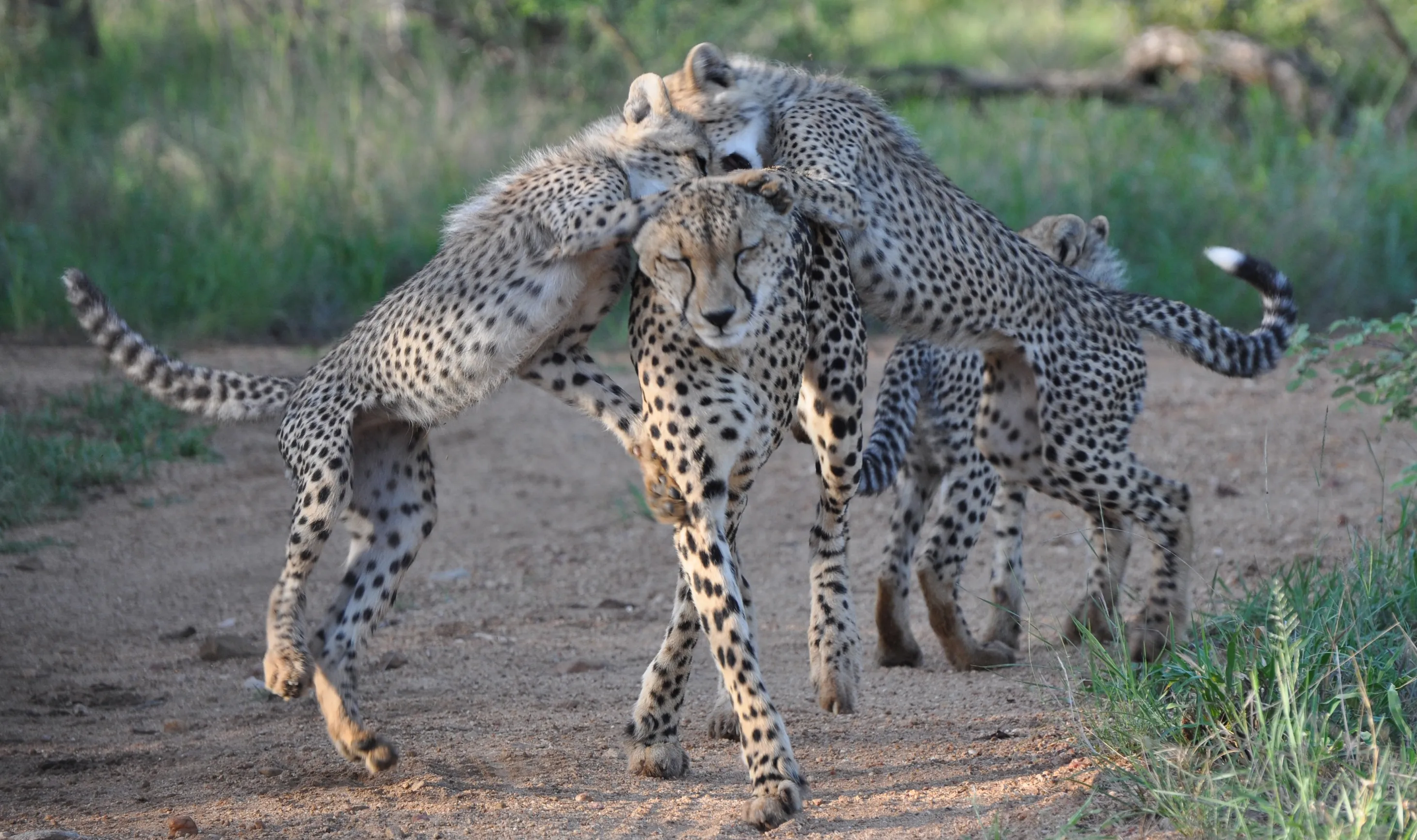Miracinonyx trumani is an extinct species of cheetah-like cat that roamed the North American prairies and steppe terrains more than 13,000 years ago.

Miracinonyx trumani probably deployed a unique predatory behavior without modern analogues. Image credit: Sheatherius / CC BY-SA 4.0.
“Among land vertebrates, the pronghorn ‘antelope’ (Antilocapra americana) is capable of a top speed of 100 km per hour and second only to the cheetah (Acinonyx jubatus),” said Universidad de Málaga paleontologist Borja Figueirido and his colleagues.
“The excessive speed of the pronghorn has been explained as an evolutionary response to predation from the now-extinct ‘cheetah-like’ cat Miracinonyx trumani, a formidable predator that roamed North America’s Pleistocene steppes and prairies 13,000 years ago.”

“Miracinonyx trumani is related to the cougar (Puma concolor) but a remarkable morphological similarity with the cheetah has been documented, presumably as a result of evolutionary convergence towards a fast-pursuit predatory behavior.”
In their new study, published in the journal Biology Letters, Dr. Figueirido and co-authors examined a skeleton of Miracinonyx trumani found in Wisconsin, the United States, and compared it with those of other modern felines, such as cougars, lions, and lynxes.
They specifically focused on the elbow-joint, which allows them to know whether the animal is adapted to hunt by holding its preys with its forelimbs or is able to chase them at high speed.

The humerus of Miracinonyx trumani was oval and elongated at the end closest to the elbow, which means that its forearm bones were further apart and, therefore, it had the ability to hunt its preys by grasping them, as cougars do.
“The case of cheetahs is really unusual; in a few seconds they can reach nearly 100 km per hour. They are the supercars of the savanna,” Dr. Figueirido said.
“This is not the case of Miracinonyx trumani,” said Dr. Alberto Martín Serra, a paleontologist at the Universidad de Málaga.

“Although it had greater manipulation capacity with its forelimbs, its physiognomy prevented it from reaching a speed similar to that of the living cheetah.”
“It was not, therefore, such a sprinting predator.”
“The claws of Miracinonyx trumani were retractable and it had the ability to grapple with its preys, like the rest of the felines, with the exception of the cheetah,” Dr. Figueirido said.
“Although in appearance they were very like modern cheetahs, their way of hunting was more similar to that of a cougar.”

In a related study, published in the journal iScience, Dr. Figueirido’s team investigated the brain of Miracinonyx trumani from a cranium endocast, using a comparative sample of other big cats.
They found that the extinct animal was not as specialized as the cheetah in deploying a fast-running pursuit or, at least, that it was not ‘cognitively’ equipped for this predatory behavior.
“Miracinonyx trumani was probably an intermediate version between the cheetah and the cougar,” Dr. Figueirido said.
“Its particular way of hunting is not currently represented in nature.”
Source: sci.news








